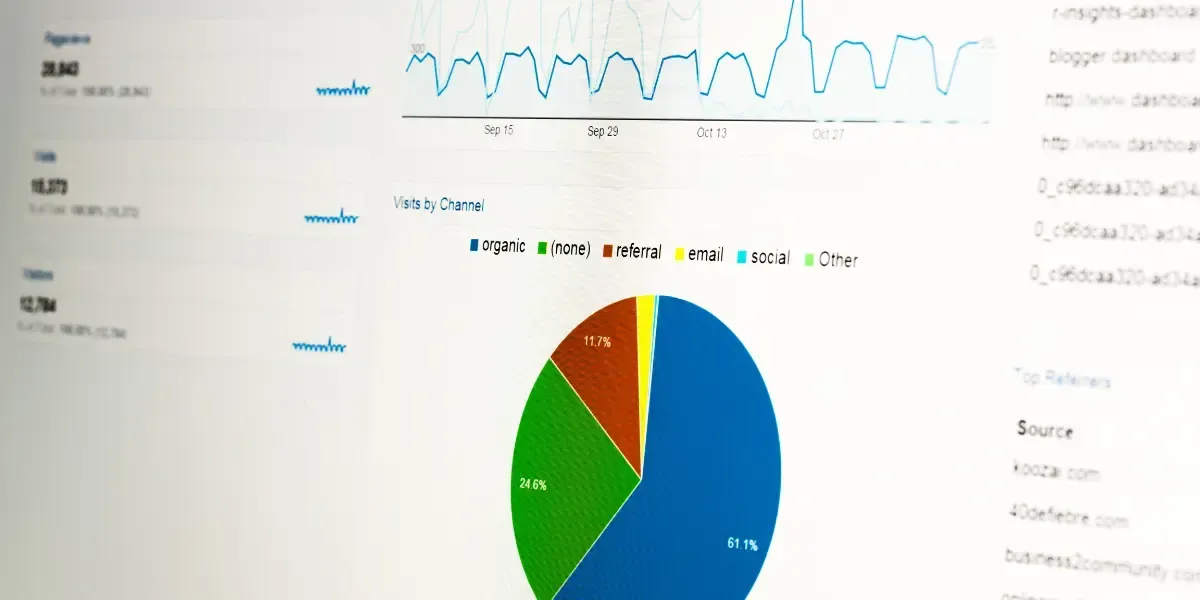Basic Guide To Core Web Vitals 2021

Google is always coming up with new and innovative ways to improve the user experience for those browsing the internet. One recent announcement that Google made in late 2020 with user experience in mind was Core Web Vitals.
Contents
- What Are Core Web Vitals?
- Why Do You Need to Learn About Core Web Vitals?
- Breaking Down the Core Web Vitals in 2021
- Largest Contentful Paint (LCP)
- First Input Delay (FID)
- Cumulative Layout Shift (CLS)
- What Do I Do Now?
Listen to this article
When these performance factors are unveiled in June 2021 to work in harmony with your existing UX signals, you can expect your Google Search Console to look a little different.
Get ahead of the curve by learning about Core Web Vitals before they are released so that your website can be in the best position to take advantage of them. Here’s what you need to know.
What Are Core Web Vitals?
Core Web Vitals are essentially a set of factors the influence your webpage’s user experience. All elements have page speed and user interaction in mind: Largest Contentful Paint (LCP), First Input Delay (FID), and Cumulative Layout Shift (CLS).
Each of these Core Web Vitals will work in harmony with your other web vitals, such as mobile-friendliness, safe browsing, HTTPS, and no invasive interstitials. These new factors will be visible in your Google Search Console enhancements section, and they will ultimately join the rest of your page experience metrics to form a fuller picture of your page’s overall UX.
Why Do You Need to Learn About Core Web Vitals?
You might be thinking, ‘Oh great, here’s yet another thing I need to do to make my website rank. I’ll just ignore it.’
At the moment, page experience isn’t an official Google ranking factor, but it will become one in June 2021. As previously mentioned, they will combine with the metrics already in place so that each of them will form an essential part of your potential customers’ user experience.
At the moment, most people already know that mobile-friendliness, a malware-free site, HTTPS, and few pop-ups are considered essential by Google. Before long, Core Web Vitals will be, as well.
Breaking Down the Core Web Vitals in 2021
To the average website user, LCP, FID, and CLS will not mean much. You may not even know how to manage these areas to ensure your webpage is performing as well as it could. We’ll address each of these components below. However, you can also reach out to a digital marketing company like Clickthrough for assistance.
Largest Contentful Paint (LCP)
Largest Contentful Paint (LCP) refers to the length of time it takes for a page to load from a user’s perspective. This feature differs from other page speed measurements like First Contextual Paint and TTFB because it measures how much time it takes for someone to click on a link and see most of the content on the screen.
You can measure your LCP score now by using Google PageSpeed Insights. This feature allows you to see the areas of your website that could do with improvement. It will measure what passes and what doesn’t while also showing you which URLs require page performance improvements.
The ultimate goal of reviewing your LCP is to ensure that every page on your site hits LCP within 2.5 seconds. For pages with several high-resolution graphics, you may need to revisit the design of those pages while also focusing on some of the following things:
- Upgrading your web host for faster load times overall
- Removing large page elements that slow down your LCP
- Removing unnecessary third-party scripts
- Addressing your bulky CSS that can contribute to slow LCP times
- Setting up lazy loading, which makes images load when someone is scrolling, rather than all at once
First Input Delay (FID)
Equally as crucial as LCP is First Input Delay (FID). FID refers to the time it takes for users to interact with your page. This is not an essential feature for all websites, but it is for many. What’s more, Google views it as incredibly important for understanding how real-life users interact with your website.
FID measures several interactions, such as:
- Clicking on site navigation links
- Choosing menu options
- Entering emails into forms
- Opening accordion text on mobile phones and other mobile devices
Google’s Search Console measures your FID information in the same way it does for LCP. It shows you which pages are performing well, which need improvement, and which are performing poorly.
Not all websites will see the value in this Core Web Vital because not all pages require interaction. For example, blog and news websites only require you to scroll down. There is often no need to interact in any other way. If that’s the case, sometimes FID will not report on your site.
If you have had a look at how your website performs for FID, and you need to make any improvements, you can use some of the following methods:
- Using a browser cache to improve load content time
- Removing non-essential third-party scripts
- Minimising JavaScript usage where possible
Cumulative Layout Shift (CLS)
The final of the three Core Web Vitals is Cumulative Layout Shift (CLS). This refers to a page’s visual stability as it loads. Essentially, if anything moves around your page as it loads, you’ve got high CLS, which is not desirable.
Like the other two Core Web Vitals, you can get an idea of how each of your webpages is performing in your Search Console. Fortunately, making changes tends to be relatively straightforward, even for those website owners who don’t consider themselves savvy web developers.
We recommend some of the following tips for improving your CLS if it ranks as poor:
- Make sure you reserve space for adds
- Use set dimensions for media like infographics, videos, images, and GIFs
- Add any new UI elements below the fold to avoid them pushing content down as the page loads
What Do I Do Now?
Google announced Core Web Vitals would be becoming a vital page performance measurement at the end of 2020. However, they’ve given website owners six months to act from that announcement date.
You now have until May to start planning for website changes to align with Core Web Vitals. You don’t have to do anything until May, but you may like to begin reviewing page elements that likely impact how well your pages will perform with these metrics in mind.
You can also get in touch with a digital marketing company for assistance in making sure your webpages align with the latest changes and are in the best possible position to rank in Google search results.
FAQ
Can I get assistance from a digital marketing company for Core Web Vitals?
Definitely! Clickthroughs has expertise in optimising websites for Core Web Vitals and can provide guidance and support in implementing the necessary improvements to enhance your website’s performance and user experience.
What are the three components of Core Web Vitals?
The three components of Core Web Vitals, which measure aspects of user experience, are Largest Contentful Paint (LCP), which assesses page loading speed, First Input Delay (FID) that measures interactivity responsiveness, and Cumulative Layout Shift (CLS), evaluates visual stability during page loading.
Digital Blog












